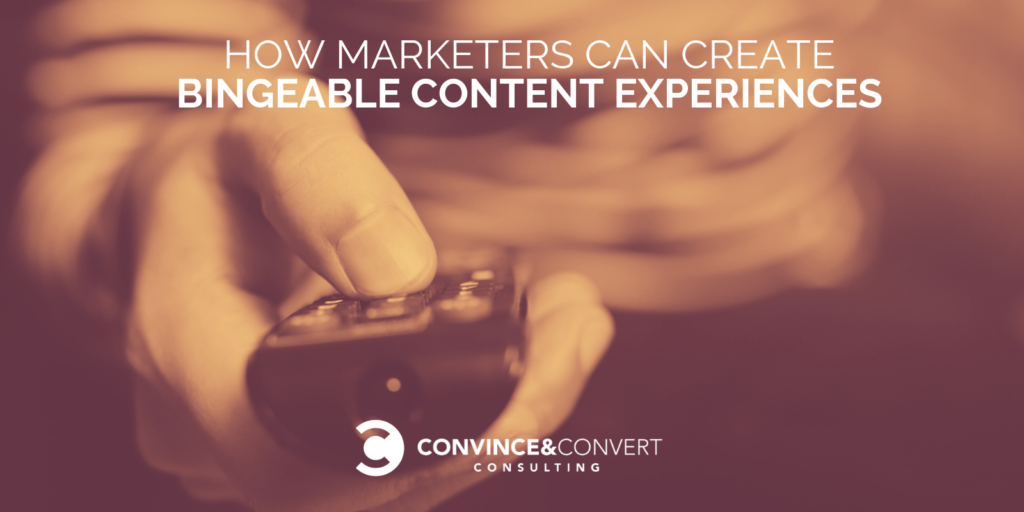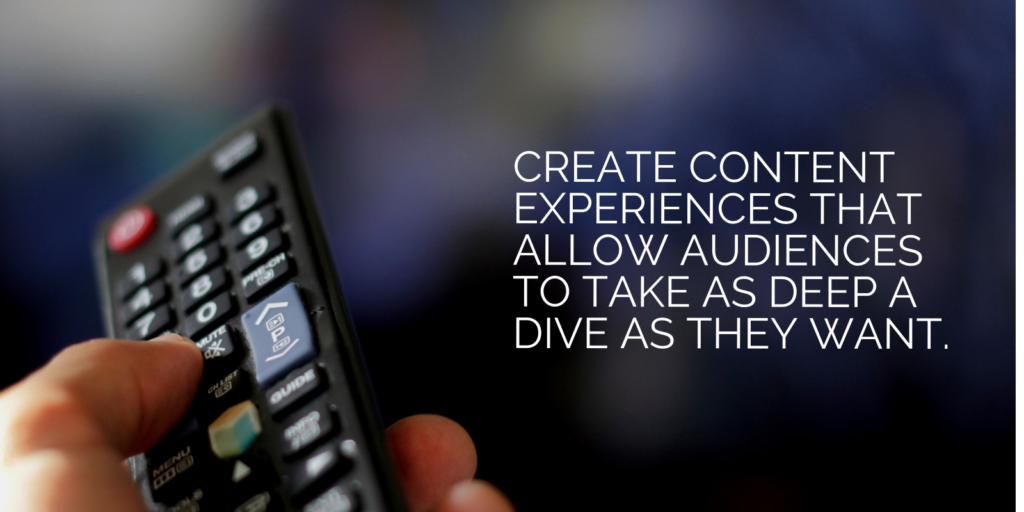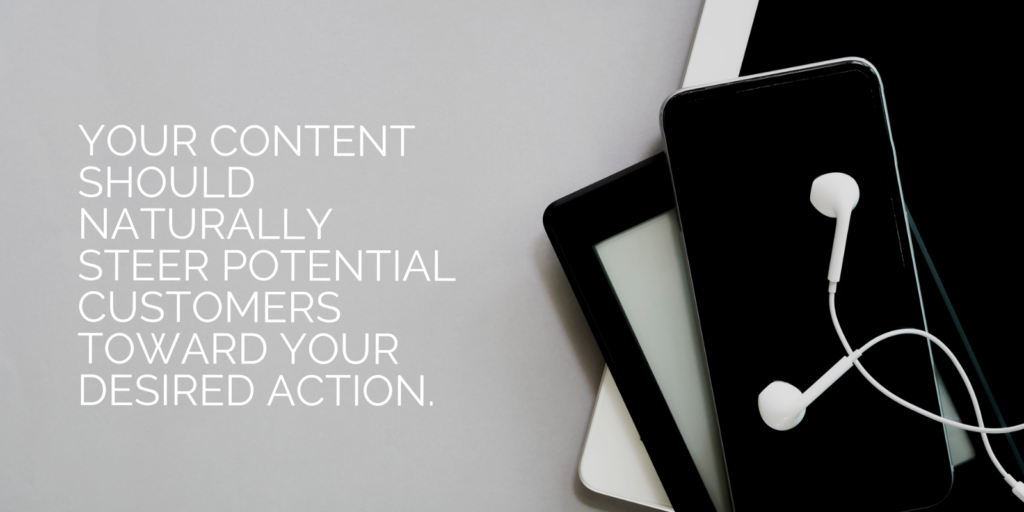
Move over, baseball. America’s new national pastime is binge-watching.
Ask your friends what they did over the weekend, and several will probably admit to burning through several seasons their favorite show. Streaming platforms, such as Netflix and Hulu, revolutionized the way people consume TV shows. Society’s changing behavior has caused the likes of HBO to embrace the trend, allowing audiences to binge on Girls, Curb Your Enthusiasm, and True Detective.
When Twin Peaks was reborn on Showtime in May 2017, the premium TV network aired the first two episodes but offered the first four new installments of David Lynch’s venerated series early on its streaming service. Showtime reported its single biggest day of user sign-ups thanks to the buzz surrounding the show, with the reboot drawing 1.7 million viewers across Showtime’s various platforms.
The binge-watching phenomenon has taught cable networks and digital content providers important lessons about customer preferences. The behavioral shift also offers invaluable insights for savvy marketers about messaging, storytelling, and customer delight.
What We Know About Binging
Netflix and Hulu have achieved success in the streaming world by creating truly customer-centric experiences. Whether people are commuting to work or lounging in bed, the services enable them to watch their favorite TV shows for hours at a time. Instead of waiting several months to see how a cliffhanger is resolved, users can immerse themselves in different universes to their hearts’ content. It doesn’t get much more customer-centric than that.
Whether people are conducting research at work or decompressing with entertainment at home, they like to really dig into the task at hand. Binge-watching capitalizes on this desire, offering an efficient way to get a lot done in a single sitting (or spread out over multiple sessions, if that’s a better fit). Marketers can cater to these preferences by creating content experiences that allow audiences to take as deep a dive as they want.

In a B2B situation, this might include a video series, articles, ebooks, case studies, or infographics—essentially a range of valuable materials that give customers a deep understanding of the problem they’re looking to solve, the ways it can be solved, and how you can help them do that.
Prospective B2B customers crave as much information as possible before they make a decision. To this end, binge behavior can satisfy even the most persnickety prospect.
Bingeable content experiences also cater to how B2B decision-makers operate. A single 800-word article isn’t going to cut it for someone researching new software solutions, but you can make it easier on them by providing plenty of content to digest.
Content consumption patterns can also help you track prospects as they move toward a purchase. If you notice a flurry of activity from one potential customer, it likely indicates that he or she is nearing the next stage in the buying journey. Spotting this behavior pattern and being able to react to it can help you help a prospect become your ideal customer.
This is where content personalization can play a big role. By triggering the next appropriate content experience, you can help facilitate and feed the urge to binge.
How to Create Bingeable Content in 5 Steps
If you want people to binge your content, you need to tell a compelling story. Each chapter should build on the previous installment, inspiring people to further their own hero’s journey.
Here are a few ways to bring binge-watching’s benefits to your organization.
1. Establish themes that speak to your customers’ needs.
Great stories begin with a mission, and content strategy is no different. What need are you trying to fulfill for your audience? What experiences are you trying to create?
Showtime’s decision to release several Twin Peaks episodes early to subscribers was a brilliant move because it capitalized on the buzz surrounding the series and addressed the audience’s penchant for binge-watching. Giving subscribers the chance to go deeper into the series at their leisure addressed audience desires for viewing flexibility. Identify your audience’s core needs, and craft your strategy around those needs rather than your own service or brand.
2. Respond to your audience’s content preferences.
When Netflix opted to release entire seasons of House of Cards at once rather than in weekly installments, the company showed a keen understanding of how to keep people engaged. Instead of insisting people return to the service to watch a new episode each week, the company empowered users to keep going while they were already in a content-consumption mindset. This approach allows people to watch at their own pace and caters to the binge-watching crowd.
Pay attention to your own audience’s preferences. You might release content on a schedule that works for your team, but consider how people might consume your articles and videos if it were up to them. A recent DemandGen report found that 88 percent of respondents are overwhelmed by the amount of available content, and 71 percent said they want content that’s easier to access. You can eliminate friction in content consumption and draw prospects further into your brand experience by personalizing content that appeals to their particular interests (more on that later).
A DemandGen report found that 88% of respondents are overwhelmed by the amount of available content, and 71% said they want content that’s easier to access. Share on X3. Create storylines that lead to the next step.
It goes without saying that your content must be valuable, but it should also have a purpose. In the same way a strong narrative guides viewers toward an ultimate resolution, your content should naturally steer potential customers toward your desired action. Don’t hit people over the head with calls to action, but make sure each piece you publish corresponds to a subsequent step and overarching goal.

When crafting your content, focus on quality over quantity. More doesn’t always mean better—even when you’re creating binge-worthy materials. Consider BBC’s Sherlock, which offers three 90-minute episodes each season but has become a darling of the binge-watching world. Don’t constrain yourself with external factors such as time and format. Decide what format will best serve your audience, and use that as your guide.
4. Personalize your content.
Personalization is a huge driver in the rise of binge-watching. Viewers can curate lists of their favorite TV shows and movies, using rating systems to teach their preferences to content providers. They can also rewatch past seasons to satiate their appetites while they await new episodes. That’s how Netflix kept people engaged when it began to offer hit shows like Mad Men and The Walking Dead. Easy access to the entire run of each series was essential to the user experience.
The ideal content experience is one that adapts as customers become more mature in their understanding of the problem they’re looking to solve.
If someone lands on your site while researching a specific topic, you might suggest they check out a beginner’s guide or an interesting tutorial series to provide them with some background. Once you’ve created a solid foundation, you can start to build on that personalized content experience.
Focus on content personalization to facilitate binge consumption and create your ideal customer. Share on X5. Leave them wanting more.
Providing bingeable content is a great way to enhance your brand experience and your relationship with audience members. That said, you don’t want to simply release a great series or ebook and then rely on the original content to carry engagement. Plan follow-up content so you can draw people back to your site in the weeks after that big launch.
You could also offer a few installments upfront and then spread out future releases to sustain interest. Hulu employed this strategy with The Handmaid’s Tale by offering the first several episodes at launch before it transitioned to a weekly release schedule. This approach gives people a chance to consider how the story develops each week, building anticipation for the next chapter.
Binge-watching has drastically changed the way the entertainment industry operates. Companies that want to take advantage of our propensity to binge must deliver innovative, high-quality content on a regular basis. These lessons hold true for marketers, who can use content-driven experiences and content personalization to facilitate binge consumption and create their ideal customer. In the words of the Content Marketing Institute’s Robert Rose, deliver “the right value, to the right audience, in their time.”
